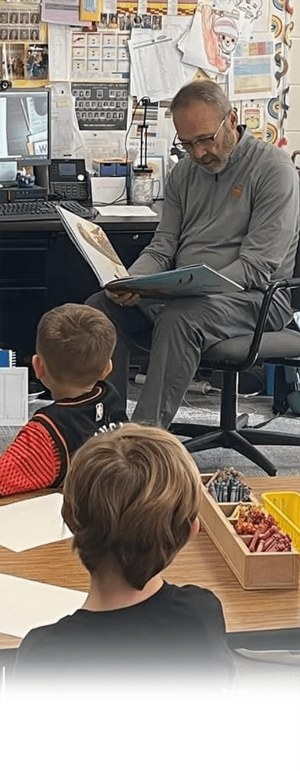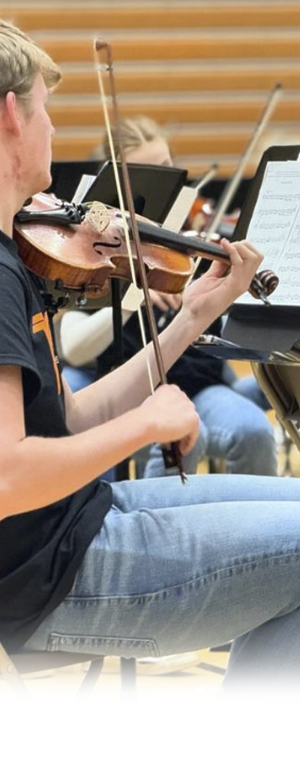Academic Excellence
Pillar 1
Academic experiences that ensure personalized learning, rigorous instruction, and readiness for future opportunities.
Purpose: The primary purpose of Rockford Public Schools is to provide high-quality educational opportunities to ensure every student’s readiness for the future. Academic excellence provides students with the necessary skills and knowledge to reach their potential.
Reason: Academic excellence is pursuing intentional and comprehensive education that promotes critical thinking, creativity, and opportunities. It encompasses a dynamic blend of curriculum, instruction, and assessment tailored to meet the diverse needs of all learners. In practice, classrooms are buzzing with engaged students, staff facilitating inquiry-based learning, and a supportive community valuing intellectual curiosity and lifelong learning. Our strategic initiatives aim to cultivate an environment where students can achieve their highest potential and thrive as confident, capable individuals prepared for success.
1A - High-Quality Instruction
1.A.1 Guaranteed and Viable Curriculum
Ensure a high standard of learning for every student by delivering rigorous and content-standard-aligned instruction across all grade levels and content areas.
1.A.2 Tiered Instruction
Assess individual student learning needs and respond with targeted instruction emphasizing English Language Arts and mathematics.
1.A.3 Student Engagement
Support daily classroom instructional design that engages students in relevant and active learning activities.
1.A.4 Data Response/Assessment
Utilize benchmark and formative assessment data to inform instruction based on building, grade level, and classroom student learning trends.
1.A.5 Eliminating Opportunity Gaps
Identify district and building population achievement trends and focus specialized instructional programming toward target students who are disadvantaged and underachieving compared to their peers.
1B - Career/College Readiness - Post Secondary Preparedness
1.B.1 Career Awareness
Accelerate opportunities for career exploration by providing regular embedded career pathway exposure throughout a student’s K-12 experience.
Engage families and students at all levels in understanding post-secondary options for careers.
1.B.2 Job Shadow Experiences
Create opportunities for students at all levels to engage in meaningful job shadow experiences that showcase varied future pathways.
1.B.3 College Credit and Certification Opportunities
Leverage current partnerships and expand new opportunities to increase access for students to earn valuable certifications and college credits while in grades 6-12.
1.B.4 Employability Skills
Ensure all students strengthen the necessary skills to enter the workforce and adulthood in ways that support success, including leadership, initiative, social skills, problem-solving, and growth mindset.
1C - Critical Thinking
1.C.1 Social-Emotional Wellness
- Integrate and support a district-wide social-emotional curriculum to establish articulated grade-level expectations and strengthen skill development for every student.
1.C.2 Embedded Inquiry Learning Opportunities
- Incorporate inquiry-driven and problem-based learning activities across all grade levels and subjects to encourage innovation and critical thinking among students.
1.C.3 Evaluating Information
- Embed information literacy skills and the leveraging of digital tools to teach students how to critically assess the credibility of information and sources.
1.C.4 Effective Communication
- Engage students in collaborative classroom learning activities to develop their abilities to communicate ideas clearly and effectively.
1D - Diverse Offerings
1.D.1 Enriching Experiences
- Extend student learning opportunities by creating community and school-based opportunities for students in all grade levels to engage in meaningful experiences during and after school hours.
1.D.2 Innovative Programming
- Expand and enroll students in innovative programs supporting a balanced and well-rounded education. Examples include multilingual programs, Science Technology, Engineering Arts Mathematics (STEAM), outdoor education, coding, robotics, academically advanced programs, fine arts, and others.
1.D.3 Co-Curricular Offerings
- Improve opportunities for students at all levels to engage in co-curricular activities, including student interest clubs, philanthropic and volunteer activities, arts programming, career awareness clubs, civic engagement clubs, and competitive and non-competitive athletic programs.




















